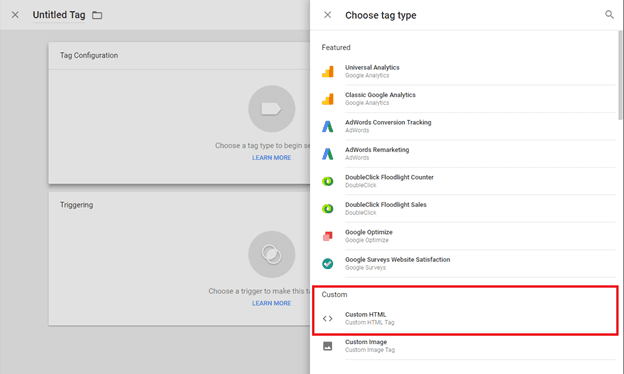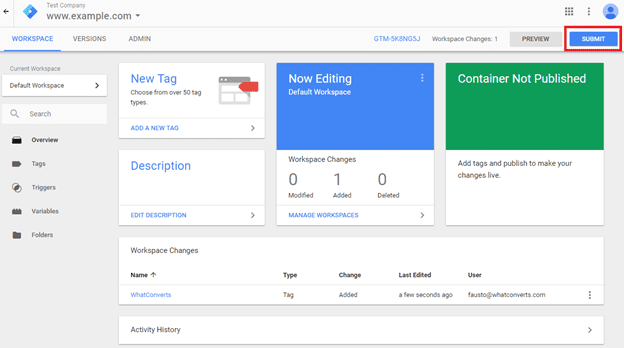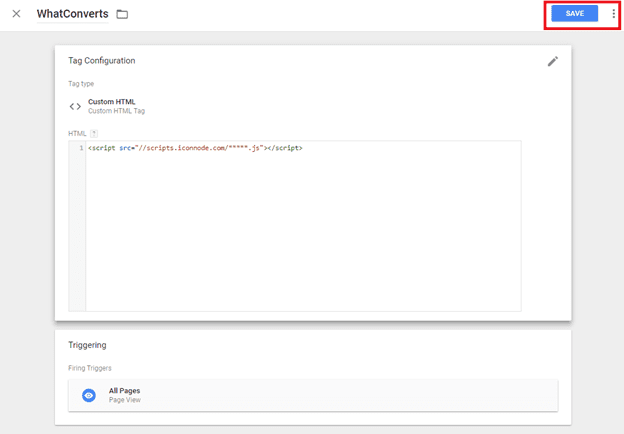Google Tag Manager
To start tracking leads across your site, you need to add your WhatConverts script to all your pages. You can do this using Google Tag Manager. For other options including adding your script to WordPress sites, please see this article on adding the WhatConverts script to your site.
1Log into your WhatConverts profile. Select "Tracking" from the top menu. Click "Tracking Code" and copy the Standard HTML code.
2Go to Google Tag Manager and "Add A New Tag" under your Workspace area. Select the "Tag Configuration" option and select "Custom HTML".

Add your WhatConverts script into the Custom HTML Tag text field. Select "All Pages" as your trigger and click on the “Add” button. Press the "Save" button on the Tag Configuration Page.
3 Click on the "Submit" button in your Workspace area, click "Publish" on the Submit Changes page.

Your WhatConverts script should now be live on your site.
Get a FREE presentation of WhatConverts
One of our marketing experts will give you a full presentation of how WhatConverts can help you grow your business.
Schedule a Demo





